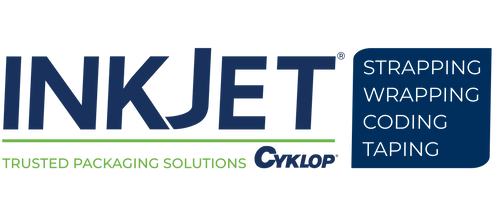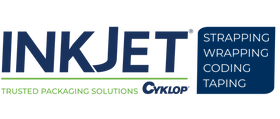Laser Marking Plastics: Key Considerations
Laser marking is one of the most powerful and versatile product coding options available today.
For decades, laser marking systems have been used to complete high-volume product coding applications. Large-scale breweries and beverage packaging facilities, for example, have long used laser systems due to their fast marking speeds, consistent accuracy, and long-lasting results. These capabilities are valuable in many other industries as well, which has influenced companies of various specialties to also use laser systems.
These industries include:
- Aerospace part production
- Food packaging
- Beverage bottling and canning
- Chemical manufacturing
- Cosmetic product manufacturing
- Cannabis and CBD production
- Pet food manufacturing
- Wire and cable extrusion
- Electrical component production
- Pharmaceutical production
Below, we examine the benefits of laser marking plastic, explore the different kinds of markings that laser systems can make, and describe which technologies are ideal for different types of plastic.
Laser Marking Plastic vs. Conventional Plastic Product Printing
Before laser marking systems were available to the public, continuous inkjet (CIJ) and thermal inkjet (TIJ) printers were the most widely-used industrial plastic marking solutions. Fast, versatile, and compatible with numerous kinds of plastic, CIJ and TIJ systems are still highly effective and popularly used across numerous industries.
CIJ and TIJ printers remain popular plastic marking solutions for various reasons, including:
- Affordability
- Intuitive operation
- Easy production line integration
- Continuous, 24-hour operation (for CIJ)
- Compatibility with both curved and flat surfaces (particularly with CIJ)
- Minimal maintenance concerns
- Diverse ink options, including specialty formulas and aftermarket alternatives
Laser marking systems offer many of the same benefits, but their comparatively high investment costs have traditionally prevented many companies from making the switch. However, laser systems have become increasingly affordable in recent years, making them an accessible option for many small- to mid-scale operations.
While laser marking systems are still more expensive upfront than CIJ and TIJ printers, they do not require any consumables beyond periodic filter replacements and have minimal maintenance needs. Over time, these factors can greatly influence the overall cost of ownership and make laser a more affordable option than inkjet printing.
By investing in a laser marking system instead of an inkjet printer, companies benefit from:
- Faster marking speeds
- Better-quality markings
- Greater marking accuracy
- Larger marking windows
- Fewer ongoing costs
See the comparison chart below for a better understanding of how laser compares to CIJ and TIJ systems:
|
|
|
|
|
|
|
|
|
|
|
|
|
|
|
|
|
|
|
|
|
|
|
|
|
|
|
|
|
|
|
|
|
|
|
|
|
|
|
|
|
|
|
|
|
Types of Markings Made by Laser Systems
Laser marking systems provide users with the ability to create different kinds of markings. While inkjet users give their codes different physical properties via ink selection, laser users influence code properties by selecting how their system physically marks the substrate.
In other words, you can instruct your laser system to mark materials in different ways to give codes and images distinct physical properties. The most popular laser marking forms include:
|
|
||
|
|
||
|
|
||
If you are unsure which marking type is right for your coding needs, a conversation with the InkJet, Inc. team can help you decide which option will work best for your materials.
Choose the Right Laser Technology for Your Marking Needs
One of the most important considerations when laser marking plastic is to match your system to your plastic substrate.
Laser marking systems can produce beams in a few different ways. Put simply, laser systems create beams by taking a light source, amplifying it through various means, and expelling it towards a substrate with a series of lenses, mirrors, and other optical components.
Today’s most popular laser marking technologies include:
Each of these technologies produces beams at different wavelengths, which has a significant impact on material compatibility.
Broadly speaking, UV lasers are compatible with more forms of plastic than fiber or CO2. However, coding and marking is a complex process that involves numerous factors. The only way to fully know if a laser marking system is compatible with your materials is to speak with an expert.
This table lists the different varieties of plastic that fiber, CO2, and UV lasers are compatible with. Scan through it to get an idea of which technology is right for you, and contact InkJet, Inc. to discuss your options with an expert.
|
|
|
|
|
|
|
|
|
|
|
|
|
|
|
|
|
|
|
|
|
|
|
|
|
|
|
|
|
|
|
|
|
|
|
|
|
|
|
|
|
|
|
|
|
|
|
|||
Want to Improve Your Laser Marking Processes? InkJet, Inc. is Here to Help
Fast, reliable, and capable of producing consistently excellent results, laser marking systems are one of today’s best plastic coding options. With a high-quality and properly-installed laser system, companies across the manufacturing and packaging spectrum can complete even the most demanding coding applications with speed and accuracy.
For more than 30 years, InkJet, Inc. has been helping businesses of all sizes and specialties to create efficient product marking workflows. Offering fiber, CO2, and UV laser systems, InkJet, Inc. has the supplies and expertise needed to help you improve your plastic marking practices. Contact us today to discuss your coding and marking needs.
For more information about QR code printing, contact InkJet, Inc. online or call 1(800) 280-3245.



